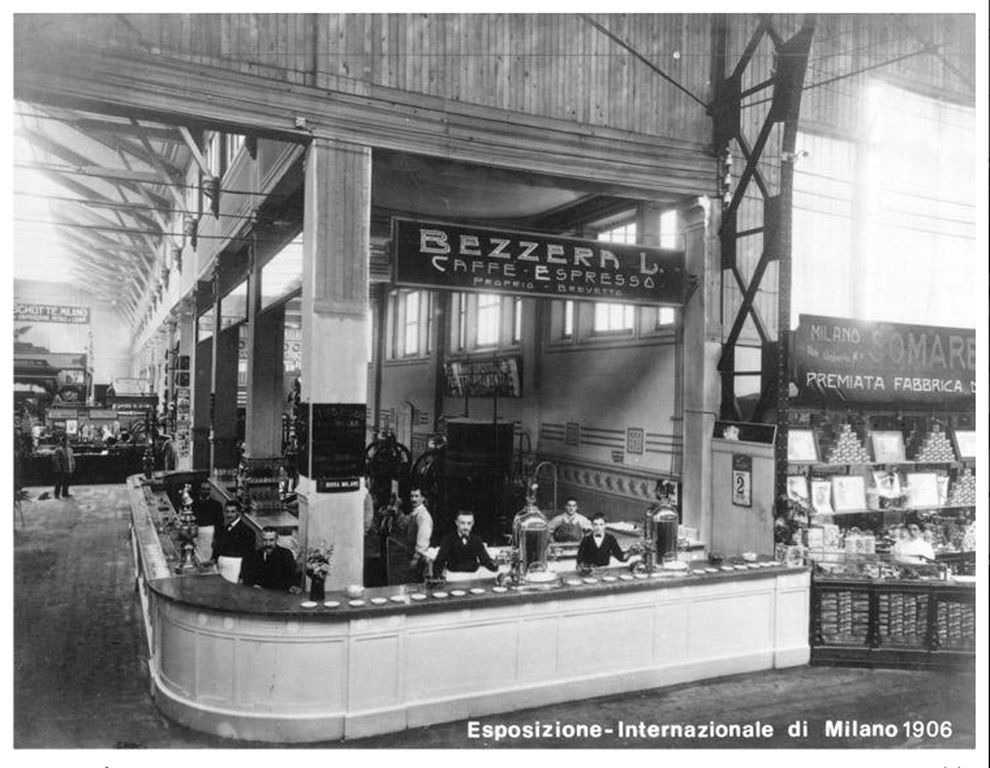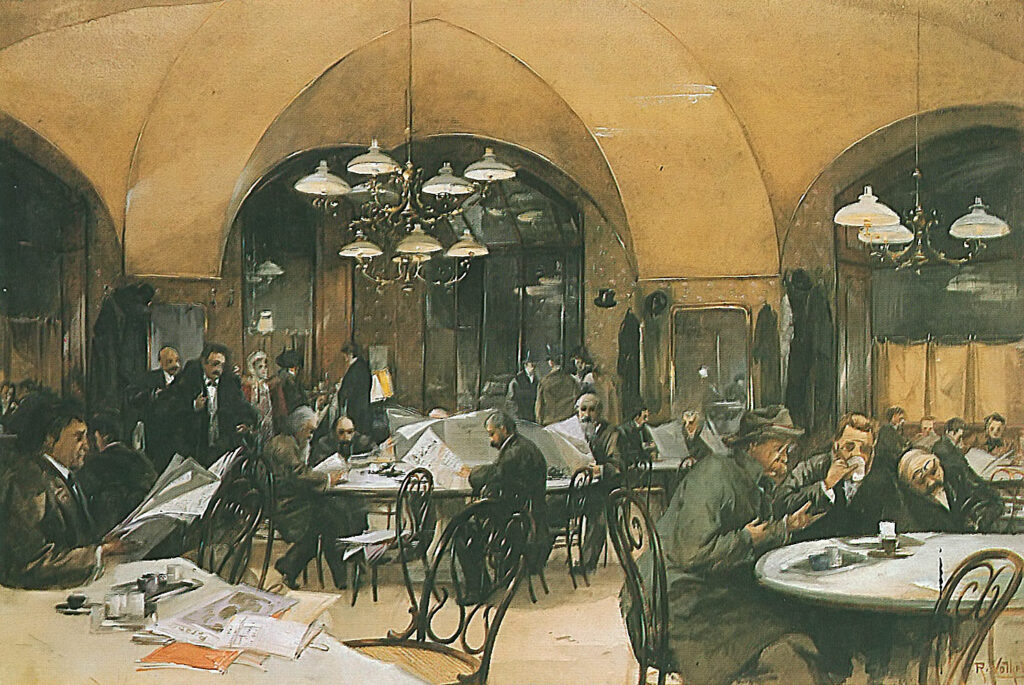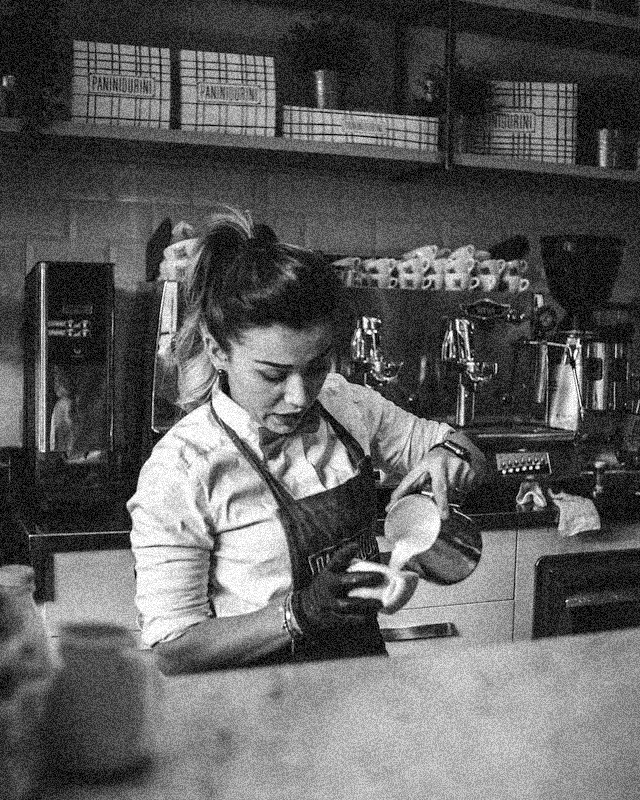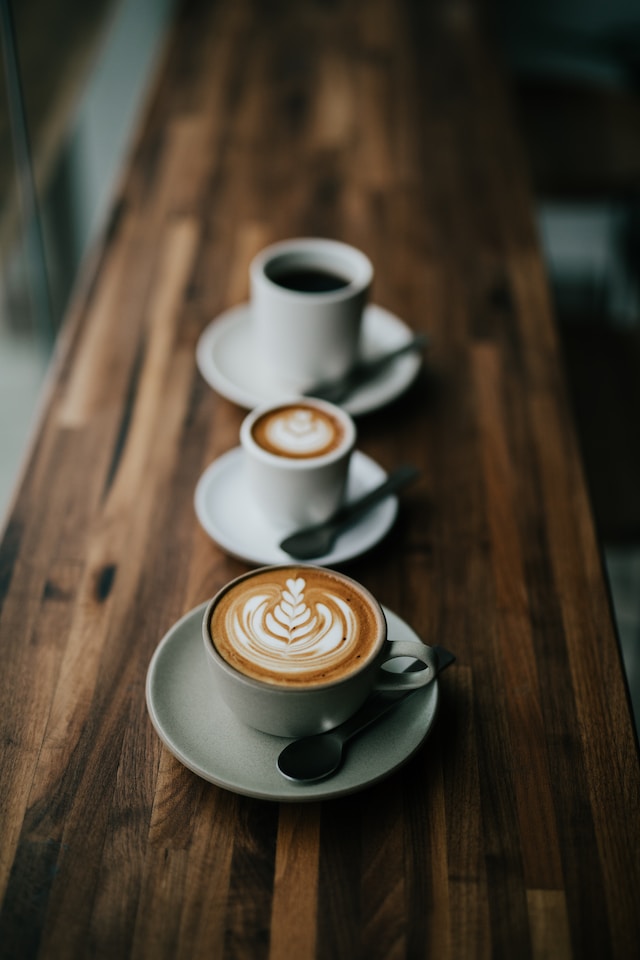Food is one of my passions, a close second to writing. When penning the scenes in the Reschen Valley series, I make sure that my characters eat and drink. Namely, because it is so inherent to the cultures I cover. Regardless of how I inject the art of cuisine into my scenes, I make sure that the details are also historically accurate. This time, I turn to coffee drinking.

It’s been fun discovering how deeply entrenched in our histories some foods and drinks are, so much so, that I have even found places in my series where I can use them to help illustrate cultural conflicts.
In my current WIP (Book 4 of the series), an espresso machine will become a bone of contention towards the end of the book. Instinctively, I created a thread by opening Angelo’s first scene with a visit to an espresso bar. I took a moment to research exactly how they might have looked back then. The results were surprising: for example, the stand-up espresso bars common in Italy were spin-offs off the American western saloons and had been around for some time before 1938, which is when the book opens.
Both Italy and Austria, specifically Vienna, are known for their coffee drinking culture, and they each have their traditions revolving around the brown bean. While it is thought that coffee first reached Europe during the 16th-century sieges of Vienna and Malta by the Ottoman Turks, the first Europeans to officially trade with coffee were merchants of the Republic of Venice.
The popularity of coffee faced opposition from the wine sellers and the disproval of zealous priests because it came from the Arab lands. ‘Satan’s drink’, they claimed, could not be drunk by Christians. In 1600, an appeal was made to Pope Clement VIII to banish coffee. The Pope, however, found coffee delicious and invigorating, and he sanctified coffee in order to banish the devil from it and allow its use.

Then the bottega del caffé – the prototype of the modern coffee shop – came on stage. Coffee houses proliferated and appealed to all walks of life. In 1901, the engineer Luigi Bezzera from Milan patented the first proper coffee machine for bars. With it, espresso firmly stepped onto the world’s coffee stage. Today, Italy is one of the world’s largest coffee roasters. (My husband and I enjoy our Illy, a decadence we save for the weekends, when we can linger over our coffees.)
Though, I personally prefer having my cuppa outside in the garden, or cozied on the couch in pajamas, when in Rome, we ought to do what the Romans do, right? The best way to drink coffee like an Italian is to have it standing at the counter in an Italian bar. Sipping it on the way to the cashier, you can chat animatedly with friends or enjoy a peaceful moment completely by yourself. This usually takes 6-8 minutes. A perfect cup of Italian coffee must satisfy what the Italians call the Quatro M del Caffé (the four M’s of coffee). These are: the coffee blend, grinder, espresso machine and an expert barista.

When drinking espresso at a bar or serving coffee at home, Italians observe the so-called galateo del caffé. This is their coffee etiquette according to which you need to use nice china cups with plates, to pre-heat the cups and to pour coffee until about two-thirds of the cup is filled. This is served with a glass of water to clean the palate.
There are many types of coffee drinks you can have in Italy. All are espresso with different variants, such as frothed milk, whipped cream, milk, liquor and water.
Originally in the South Tyrol area of Austria and Italy, coffee was made from the Anterivo “coffee bean” which comes from a plant that is neither coffee nor bean. The Anterivo coffee is a type of lupine that for decades has provided a “coffee” that was drunk mixed with barely or wheat. Anterivo was tradition until the triumph of the coffee bean chains.
Across the border, into Austria, is when things get distinctively serious. The history of Viennese coffee house culture is closely linked to the end of the Siege of Vienna in 1683. The first coffee houses already had several of the characteristics that are still typical of a Viennese-style coffee house today. Waiters served a glass of water with every cup of coffee, an old Oriental custom of honoring guests, and they were equipped with card games and pool tables. The establishments put out newspapers for its guests to read and started serving warm meals and alcohol. The Viennese coffee house became the epitome of a good quality of life in all of Europe. Large rooms, red-velvet seats, and magnificent chandeliers were the typical features that were essential for any prestigious coffee house.

Take your seat in an era far removed from daily modern bustle. Your entrance ticket is a cup of coffee, just as it has been for generations.
Once you have ordered, be it a Kleiner Schwarzer, Kapuziner, Einspänner or Melange – and these are just some of the specialities – sit back and relax. Vienna’s coffee culture has given birth to more coffee variations than anywhere else on the planet. There are 13 different creations that are served today.
The Viennese Kaffeehaus can be compared to an extended living room. It is ideal for people who like to be alone amongst company. It is both a stage and a private space. A particular joy of the Viennese Kaffeehaus lies in its service: male waiters are traditional, dressed in black-tie, and are addressed as Herr Ober. Coffeehouses are made for spending whole afternoons in them, even if you only drink one coffee. You feel at home in a Kaffeehaus as you step inside: the setting is spacious yet intimate, there is plush seating around marble tables, the scrape of traditional Thonet wooden chairs on parquet floors and mirrors reflecting the mood.
More than 300 years later the Kaffeehaus is still an institution. The Viennese have developed a whole culture around coffee drinking and elevated it to an all encompassing attitude of life. Here’s a report you’ll enjoy from “A Taste of Austria”.
Click on the button to watch the video in a new window!
(Source: youtube.com)
Get the Box Set Season 1: 1920 – 1924



